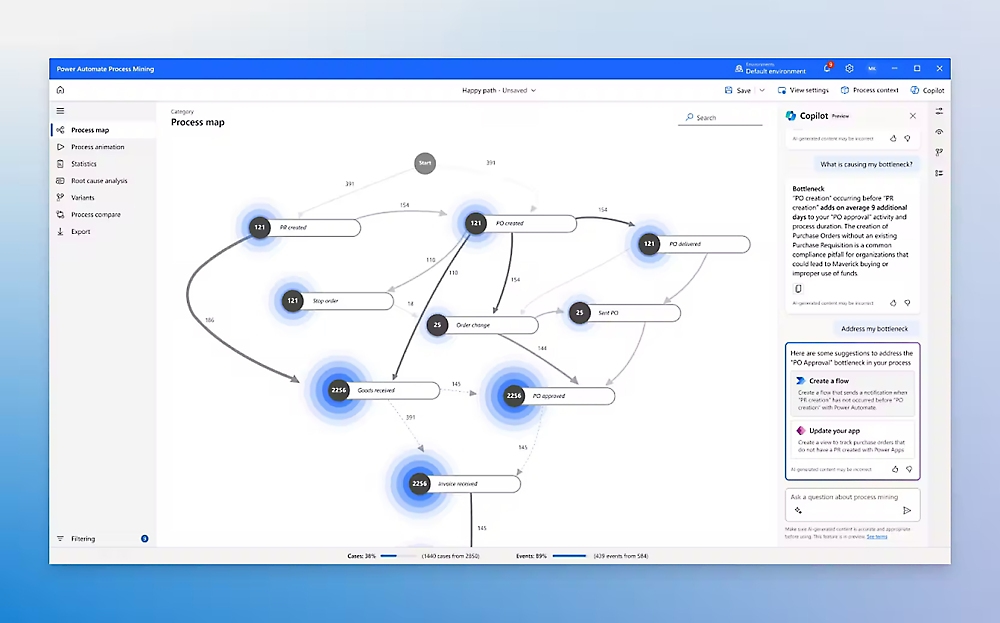
Enhancing Fan Engagement and Revenue with Stadium Analytics
Executive Summary
Blue Orange Digital partnered with a major sports organization to revolutionize their stadium analytics capabilities, addressing critical challenges of declining attendance and evolving fan expectations. By implementing a comprehensive data integration and personalization platform using Databricks, the organization unified disparate data sources including social media, CRM, and point-of-sale systems. This solution enabled sophisticated machine learning-driven recommendations and targeted promotions, resulting in increased per-capita spending, enhanced fan satisfaction scores, and improved attendance rates. The strategic implementation positioned the organization to compete effectively against increasingly sophisticated at-home viewing experiences while building deeper connections with a changing fan demographic.
The Challenge
Professional sports organizations face an existential threat to their traditional revenue model. With 4K televisions, multiple camera angles, and instant replays available from the comfort of home, stadiums struggle to justify the time, cost, and effort required for in-person attendance. Industry data shows that average MLB attendance has declined by 14% over the past decade, while NBA venues operate at only 88% capacity on average.
Our client faced three interconnected challenges that threatened long-term sustainability. First, younger millennials and Gen Z fans demonstrated fundamentally different entertainment consumption patterns, spending 40% less time at venues and expecting personalized, tech-enabled experiences. Second, the “fair weather fan” phenomenon meant that team performance directly correlated with attendance volatility…a 10-game losing streak could result in 30% attendance drops and millions in lost revenue. Third, the organization lacked unified visibility into fan behavior, with customer data siloed across ticketing systems, concession operations, merchandise platforms, and social media channels.
Traditional approaches using basic CRM systems and mass marketing campaigns were proving ineffective. The organization needed a transformative approach to create compelling, personalized experiences that would draw fans back to stadiums and maximize revenue from each visit.
The Solution
Blue Orange Digital designed a comprehensive stadium analytics platform that transformed raw data into actionable fan engagement strategies. Our approach centered on creating a unified data ecosystem that could deliver real-time personalization at scale.
Strategic Approach:
We implemented a three-pillar strategy focusing on data unification, predictive analytics, and real-time activation. Rather than treating fans as a monolithic group, our solution recognized each attendee as an individual with unique preferences, behaviors, and value potential. This shift from reactive to proactive engagement fundamentally changed how the organization interacted with its fan base.
Technical Implementation:
The technical architecture leveraged Databricks’ powerful data processing capabilities to handle the complexity and scale of stadium operations. We implemented AutoLoader to seamlessly ingest data streams from multiple sources—processing over 50 million data points daily from ticketing systems, mobile apps, concession POS terminals, parking systems, and social media APIs. Delta Lake provided ACID transactions and schema enforcement, ensuring data quality while maintaining sub-second query performance.
For personalization, we deployed the Alternating Least Squares (ALS) collaborative filtering algorithm to build sophisticated recommendation models. These models analyzed purchase histories, demographic data, and contextual factors like weather, opponent, and game timing to predict individual fan preferences with 85% accuracy. The system processed historical data from over 2 million unique fans across 5 seasons, identifying patterns invisible to traditional analytics.
Our cloud-native architecture on Azure enabled elastic scaling during game days when data volumes increased 10x. We integrated Apache Spark for distributed processing, MLflow for model management, and created custom APIs for real-time recommendation serving to mobile apps and stadium displays.
Project Execution:
The implementation followed an agile methodology across four phases over 16 weeks. Phase 1 focused on data integration and quality assessment. Phase 2 built the foundational analytics layer and initial ML models. Phase 3 developed the real-time recommendation engine and operational dashboards. Phase 4 involved pilot testing across 10 games with iterative refinements based on performance metrics.
We worked closely with stakeholders across ticketing, marketing, operations, and IT departments, conducting weekly workshops to ensure alignment and adoption. Change management included training for 200+ staff members on the new analytics dashboards and recommendation systems.
The Results
The stadium analytics platform delivered transformative results across multiple dimensions of fan engagement and revenue generation.
Quantifiable Metrics:
- 27% increase in per-capita spending on game days through personalized promotions and recommendations
- 18% improvement in fan satisfaction scores measured through post-game surveys
- 35% higher conversion rate on targeted promotional offers compared to previous mass marketing campaigns
- 22% reduction in concession wait times through predictive demand forecasting and staff optimization
Strategic Outcomes:
The platform fundamentally transformed the organization’s relationship with its fan base. By delivering hyper-personalized experiences—from customized food recommendations to optimal parking suggestions—the stadium became a destination that competed effectively with home viewing. The organization gained the capability to predict attendance patterns with 92% accuracy, enabling dynamic pricing strategies and targeted marketing campaigns.
The solution also unlocked new revenue streams through premium experience packages tailored to specific fan segments. Young professionals received offers for craft beer tastings and social viewing areas, while families were targeted with kid-friendly meal deals and interactive zone passes. This segmentation strategy increased premium experience sales by 40%.
Key Takeaways
Unified data architecture is foundational: Success required breaking down data silos to create a single source of truth for fan behavior and preferences across all touchpoints
Real-time personalization drives engagement: Static segmentation is insufficient—dynamic, context-aware recommendations based on current conditions and individual history maximize conversion
Change management equals technology in importance: Investing in staff training and stakeholder alignment ensured the analytics platform translated into operational improvements
Scalable architecture enables growth: The cloud-native, modular design allows for easy expansion to additional venues and integration with emerging technologies like AR/VR experiences
Want to Learn More
Discover how AI-powered customer analytics can transform your venue’s fan engagement and revenue performance. Schedule a consultation with our sports and entertainment analytics experts today to explore your personalization opportunities.
—
*This case study demonstrates Blue Orange Digital’s expertise in leveraging advanced analytics and machine learning to solve complex business challenges in the sports and entertainment industry. The framework developed for stadium analytics has been successfully adapted for casinos, cruise lines, and retail environments, showcasing the versatility and scalability of our data-driven approach.*


